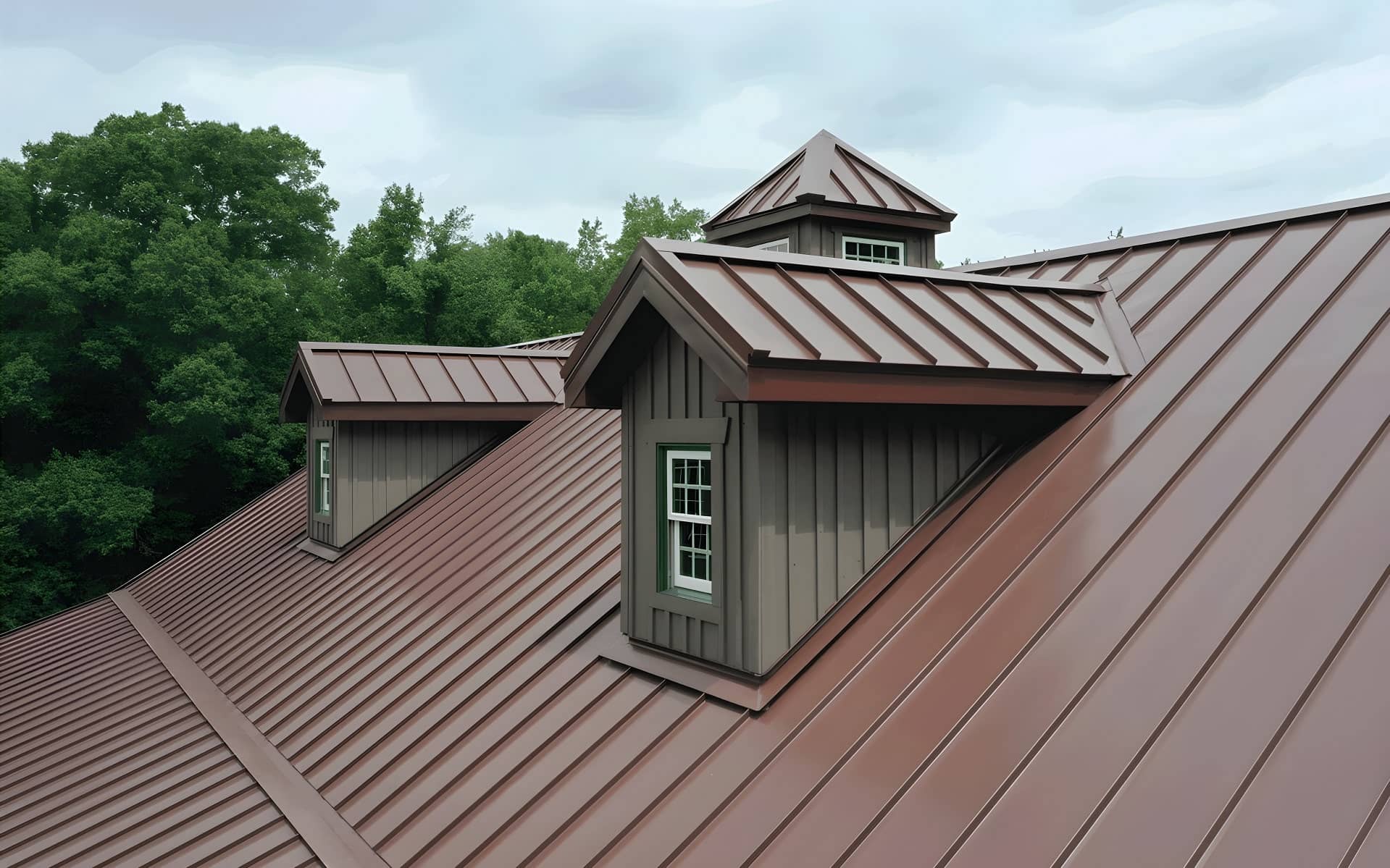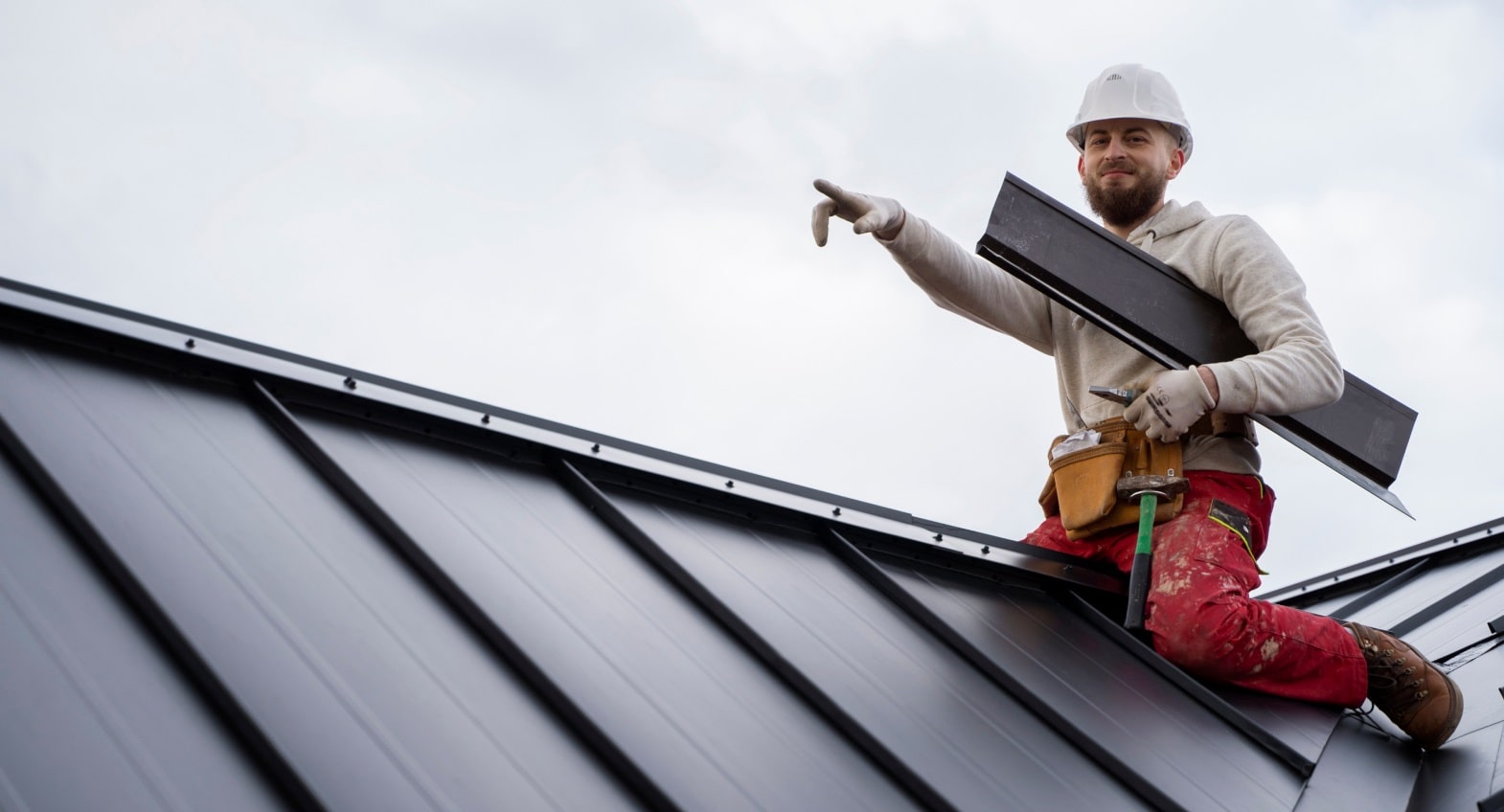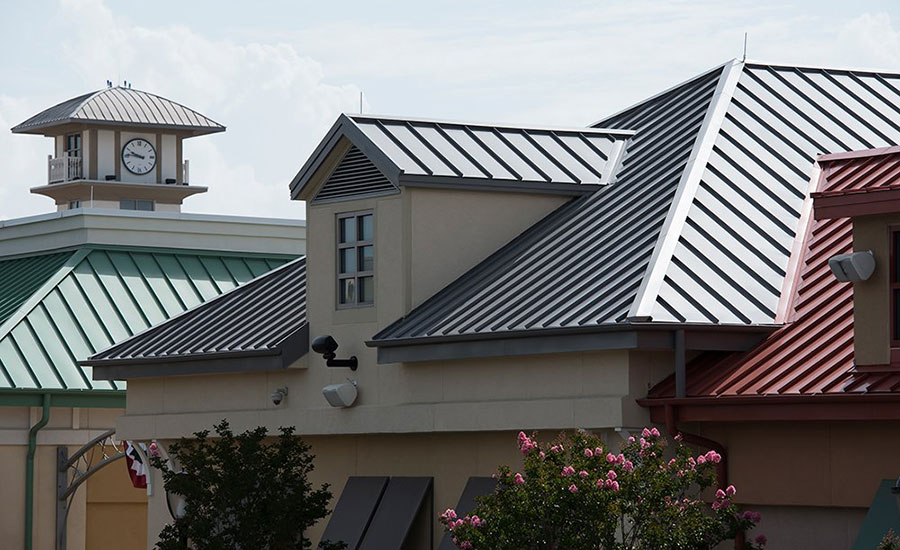Metal Roofing Lifespan: How Long Does Metal Roofing Last?
Discover the secrets to the long-lasting strength of metal roofing in our ultimate guide. Learn what influences its lifespan...

When it comes to choosing a roofing material for your home or building, durability and longevity are crucial factors to consider. You may ask yourself "How long does a metal roof last?" Metal roofing has gained popularity in recent years due to its exceptional durability and longevity compared to other roofing materials.
If you're contemplating investing in a metal roof, it's important to understand its lifespan and how it can benefit you in the long run. In this blog, we will delve into the lifespan of metal roofing and explore the factors that contribute to its longevity.
How Long Does a Metal Roof Last
Metal roofs can have an average lifespan of 40 to 70 years or more. This lifespan significantly exceeds that of asphalt shingles, which typically last around 20 to 30 years. However, it's important to note that the lifespan of a metal roof can be influenced by various factors, including the type of metal used and climate conditions. As well as whether it's a regularly maintained and properly installed metal roof. By being aware of your roof's expected lifespan, you can make informed decisions regarding maintenance, repairs, replacements, and upgrades, ensuring the long-term integrity and performance of your roof.
Why Longevity Is An Important Factor When Choosing A Roofing Material
The longevity of a roofing material is an important factor to consider as it directly impacts cost-effectiveness, maintenance requirements, property value, peace of mind, sustainability, time-saving benefits, and potential insurance advantages. By selecting a roof with a long lifespan, you make a wise investment that provides lasting protection and benefits for years to come.
What The Article Will Cover
Understanding Metal Roofs
Metal roofs are known for their durability, weather resistance, energy efficiency, and environmentally friendly qualities. They are available in a wide range of styles, colors, and finishes, allowing homeowners to achieve the desired look for their property.
Different Types Of Metal Roofs
- Steel Roofing: Steel is a popular choice for metal roofing due to its strength and affordability. It is available in different gauges, with thicker gauges offering increased durability. Steel roofs are typically coated with zinc or a combination of zinc and aluminum to enhance corrosion resistance.
- Aluminum Roofing: Aluminum is lightweight, corrosion-resistant, and an excellent choice for coastal areas or regions with high humidity. It is more expensive than steel but offers superior resistance to rust and corrosion. Aluminum roofs are often used for their energy-efficient properties and are available in various styles.
- Zinc Roofing: Zinc is a premium metal roofing material known for its longevity and distinctive appearance. It develops a protective patina over time, which helps prevent corrosion. Zinc roofs are often chosen for their aesthetic appeal and sustainable qualities.
- Copper Roofing: Copper is a prestigious and visually striking roofing material. It is highly durable and resistant to corrosion. A copper roof often develops a beautiful patina over time, adding elegance and character to any structure.
Pros And Cons Of Metal Roofing
Pros:
- Exceptional durability and longevity
- Resistant to harsh weather conditions
- Energy-efficient
- Environmentally friendly
- Versatile in terms of style, color, and finish options
- Require virtually no maintenance
- Fire-resistant
Cons:
- Higher upfront cost
- Improper installation can lead to noise issues during heavy rainfall
- Expansion and contraction due to temperature fluctuations
- Vulnerable to denting from heavy impacts, such as falling branches or hail
- Without proper insulation or underlayment, metal roofs can transmit heat, leading to higher energy consumption in hot climates

Typical Lifespan Of Metal Roofs
Expected Longevity Of Different Types Of Metal Roofs
- Steel Roofing: This metal roof lasts between 40 and 70 years.
- Aluminum Roofing: Aluminum roofs have a similar lifespan to steel roofs, lasting between 40 and 70 years.
- Zinc and Copper Roofing: Zinc and copper roofs are known for their longevity, with an expected lifespan of 80 to 100 years or more.
Comparisons To Other Types Of Roofing Materials
When comparing metal roofs to other common roofing materials in terms of lifespan, metal roofs outperform them significantly. An asphalt shingle roof has a lifespan of around 20 to 30 years, requiring more frequent replacements and maintenance. Wood shingles typically last between 20 and 40 years, while clay or concrete tile roofs have a lifespan of 50 to 100 years. However, it's important to note that proper installation, maintenance, and environmental factors can impact the lifespan of all roofing materials.
Factors Influencing The Lifespan Of Metal Roofs
There are several factors that can influence the lifespan of metal roofs. Here are some of these factors:
Quality Of The Material
High-quality metals, such as premium-grade steel, aluminum, zinc, or copper, are more durable and resistant to corrosion. Investing in superior quality materials upfront can greatly enhance the lifespan of your metal roof.
Installation Process
Improper installation can lead to issues such as leaks, premature aging, or structural problems. It is crucial to hire experienced and reputable roofing contractors who are skilled in installing metal roofs.
Climate And Weather Conditions
Extreme temperatures, high humidity, heavy rain, snowfall, and exposure to saltwater or pollutants can affect the performance and longevity of the roof. Metal roofs are generally well-suited to withstand harsh weather conditions, but certain metals may be more suitable for specific climates.
Maintenance And Care
Regular maintenance practices help extend the lifespan of your metal roof and prevent minor issues from escalating into major problems.
Underlayment Selection
Underlayment is a crucial component of a metal roofing system. It acts as a moisture barrier, enhances thermal insulation, and provides added protection against leaks. The selection of the appropriate underlayment material and its proper installation contributes to the overall lifespan and performance of the metal roof.
Maintenance And Care For Prolonging Metal Roof Lifespan
Regular inspections are critical for identifying any signs of damage, wear, or potential issues with your metal roof. Inspections should be conducted at least twice a year, preferably in the spring and fall, and after extreme weather events. An experienced roofing contractor or a qualified inspector can assess the roof's condition, inspect standing seam metal roof (a type of concealed fasteners) and drainage systems, and identify any areas that may require attention. Early detection of problems allows for timely repairs and prevents them from developing into more significant and costly issues.
Cleaning And Maintenance Practices
Proper cleaning and maintenance practices help keep your metal roof in optimal condition. Here are some important practices to consider:
- Regular Cleaning: Remove debris, leaves, branches, and other loose materials from the roof surface.
- Gutter Cleaning: Keep gutters and downspouts clear of debris to ensure proper drainage.
- Preventing Ponding Water: Ensure that water does not accumulate or pond on the roof surface.
- Trim Overhanging Trees: Trim branches that hang over the roof to prevent scratching, damage, or the risk of falling debris during storms.
- Avoid Walking on the Roof: Minimize foot traffic on the roof to prevent damage to the metal roofing panels or fasteners. If maintenance or repairs are necessary, consult with a professional contractor.

When To Consider Replacing Your Metal Roof
Although metal roofs are known for their incredible durability and longevity, there may come a time when replacing your metal roof becomes necessary. Whether due to wear and tear, damage, or the need for a new aesthetic, understanding the signs and making informed decisions can help you determine the right time for a replacement.
Signs Of Wear And Tear
- Advanced Age: Metal roofs have long lifespans, but if your roof is approaching or has exceeded its expected lifespan, it may be time to consider a replacement.
- Widespread Corrosion or Rust: If you notice extensive corrosion or rust on a large portion of your roof, it may be a sign that the protective coating has deteriorated, compromising the roof's structural integrity.
- Leaks and Water Damage: If you notice water stains on your ceiling, damp spots on the walls, or any signs of moisture inside your property, it's crucial to investigate the source. While some leaks can be repaired, extensive or recurring leaks may suggest underlying issues with the roof's flashing, seams, or fasteners. In these instances, a roof replacement may be the most effective solution to prevent ongoing water damage and potential mold growth.
- Damaged or Missing Panels: If the damage is widespread or affects a significant portion of the roof, repairing each panel individually may not be practical or cost-effective. Replacing the roof with new metal panels ensures a uniform and reliable system that can withstand the elements and prevent future issues.
- Excessive Energy Consumption: An inefficient metal roof can result in higher energy bills due to inadequate insulation or poor ventilation. If you notice a significant increase in your energy consumption or experience inconsistent indoor temperatures, it may indicate that your roof is not providing sufficient thermal insulation.
- Structural Damage: If your metal roof has experienced severe structural damage, such as sagging, warping, or significant movement, it is a clear indication that a replacement is necessary.
Cost Vs. Benefit Analysis Of Replacement Vs. Repair
When assessing whether to replace or repair your metal roof, it's essential to conduct a cost vs. benefit analysis. Factors to consider include:
- Extent of Damage: Assess the severity and extent of the damage. If the damage is localized and can be adequately repaired without compromising the overall integrity of the roof, repairs may be sufficient. However, widespread or significant damage may make replacement a more cost-effective and practical choice.
- Age of the Roof: Consider the age of your metal roof. If it is approaching or has exceeded its expected lifespan, replacement may be more cost-effective in the long run than investing in frequent repairs.
- Long-Term Cost Savings: Evaluate the potential long-term cost savings. While replacement may involve a higher upfront cost, it can provide increased energy efficiency, reduced maintenance needs, and improved protection, resulting in lower overall costs over the roof's lifespan.
Choosing The Right Roofing Contractor For Replacement
Selecting the right roofing contractor for a metal roof replacement is crucial. Consider the contractor's experience and expertise in working with metal roofs, including their track record and familiarity with the specific material you plan to use. Ensure they have the necessary licenses and insurance for protection. It will also help to request references and read reviews to assess their reputation and quality of work. You would also want to obtain written estimates and contracts that clearly outline the scope of work, materials, timelines, and payment terms. Lastly, inquire about warranties provided by the contractor and the manufacturer of the metal roofing materials to protect your investment.
Choosing a reputable roofing contractor is crucial to the overall health of your metal roofs. So for metal roof repairs and replacements, reach out to Affordable Roofing Systems at (813) 542-8462 and get a free estimate.
